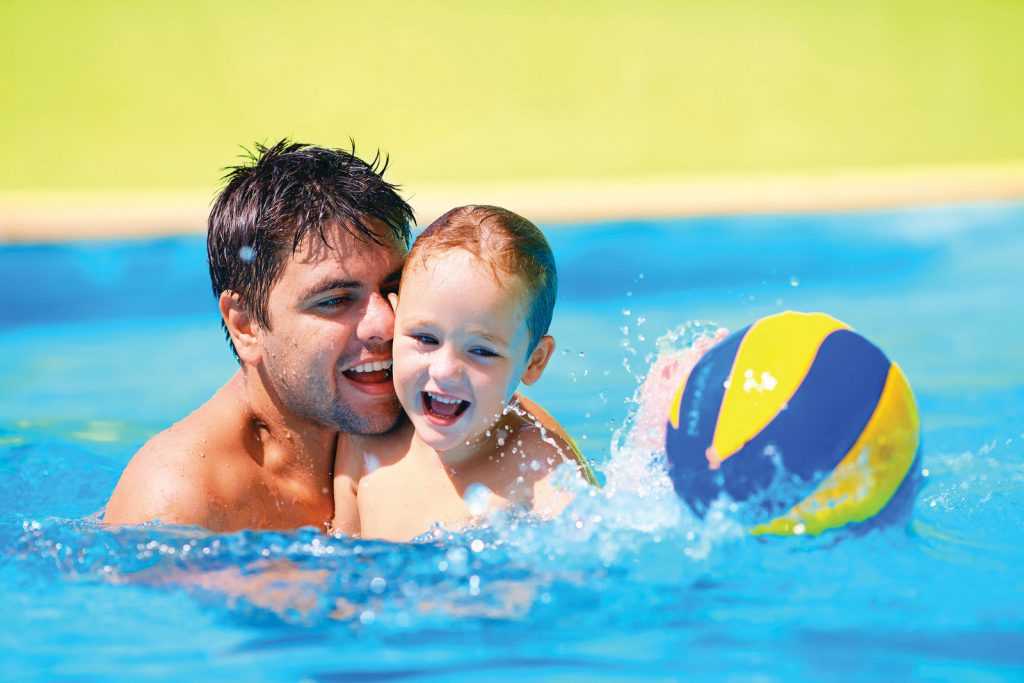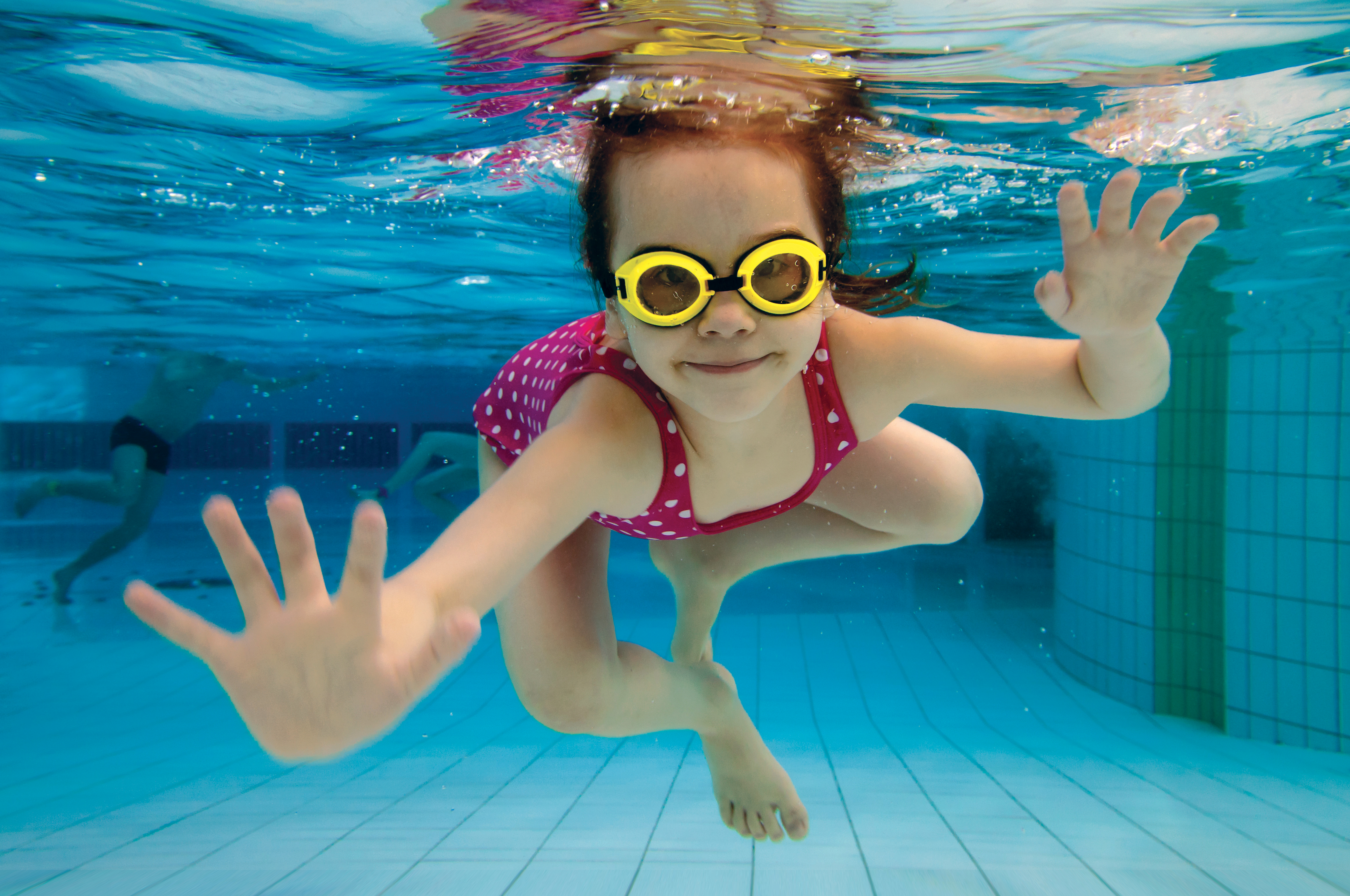Learning to swim has a myriad of benefits for kids of all ages and abilities. From boosting activity levels and learning life-saving safety skills to developing self-confidence, time in the pool is time well spent.
Today, swimming is one of the most popular and most affordable forms of low-impact exercise with a variety of different types of lessons and water activities that are family-friendly.
Physical benefits
Water supports 90% of body weight, so regardless of a child’s ability level, the pool can be a fun and relaxing environment where they can enjoy themselves and have a chance to exercise their bodies. With each kick or stroke through the water, they’ll start to build muscle tone and strength. Each movement through the water isolates and works a different muscle group. It teaches them how to coordinate different motions in order to achieve a physical goal—and for youngsters with movement restrictions, “working” in the pool can help them improve their range of motion.
Learning to swim and float also helps with balance, coordination and the development of motor skills. Buoyancy reduces body weight by 80%, thereby offering an innovative environment for restriction-free (or at least restriction-less) movement that isn’t possible elsewhere.

Emotional benefits
Self-esteem and self-confidence are missing in many children with disabilities for obvious reasons. Consequently, the “I did it!” moments in swimming allow these kids to experience an exponential sense of achievement during their time in the pool. Here, they can learn new skills, and interact with others in a non-threatening environment; with qualified professionals who will help them to continue exploring their boundaries, discovering exciting new abilities and finding social opportunities.
Better safe than sorry
According to research, kids with disabilities have a higher risk of drowning and it’s among the leading causes of death for children with autism because of three common characteristics: wandering, fascination with the water, and a lack of understanding of danger.
It can mean the difference between life and death if you teach your child how to save themselves, should they land accidentally in the water. Not only will swimming lessons present them with the chance to develop better spatial awareness (as they use reference points and explore water depth) but, along with the physical balance they may gain, it could help them avoid falling into the water in the first place.
Work with instructors
Working with professionals who have tried-and-true techniques is key to helping your children tackle new tasks more confidently and overcome their fears. Children who have participated in regular swimming lessons are shown to have enhanced developmental skills, as well as physical abilities, than other children. (Think about it: swimming lessons involve getting ready with the right equipment; constant counting; listening to and trying to follow instructions; and sharing space with other children who are trying to perform the same activity).
There’s no doubt about it: Once you’re child is comfortable in the water, swimming is good for a full-body workout that’s a sweat-free boost to metabolism and energy levels. So grab a pair of goggles, your swimsuit, a bathing cap and flotation devices, and join your kids in the pool. It’ll be the most family fun you’ve had in a long while—and there’s no such thing as being “too cool for the pool.”
#watersafety














